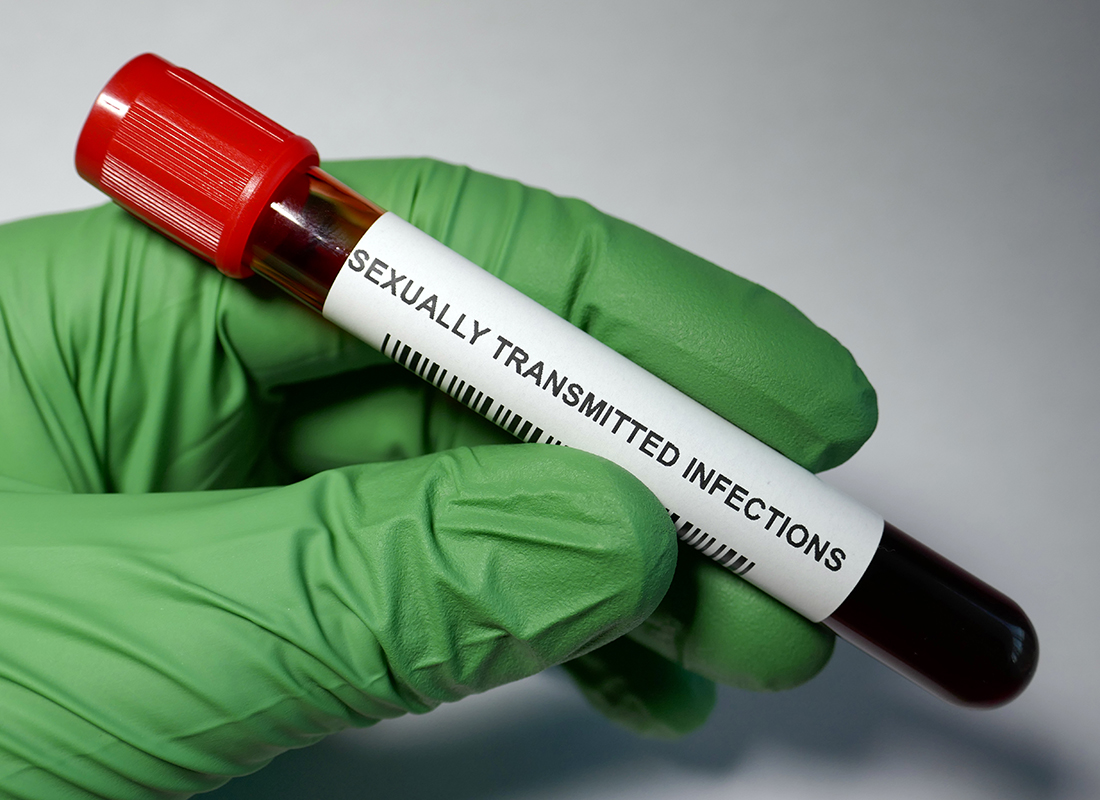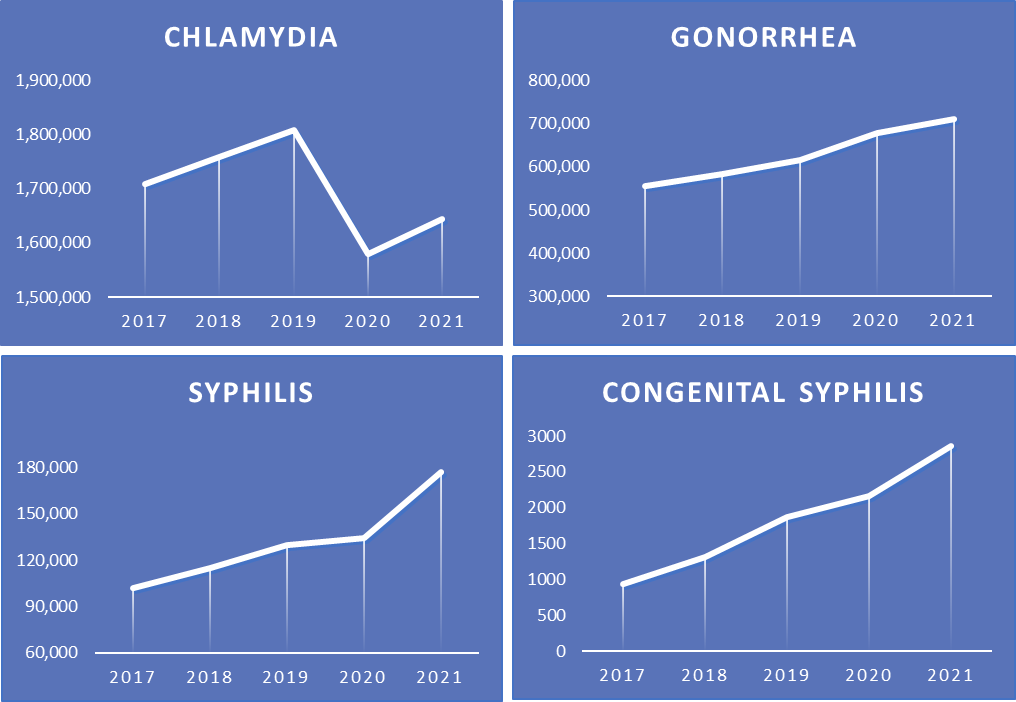CDC Calls Continued Rise in Cases of STIs “Alarming”
Health inequities and disrupted STI testing and care during the pandemic continued to contribute to a rise in cases in 2021.

According to the Centers for Disease Control and Prevention’s (CDC’s) most recent surveillance data from 2021, rates of sexually transmitted infections (STIs), including chlamydia, gonorrhea, and syphilis, continue to rise in the US.1
In its annual report, Sexually Transmitted Disease Surveillance, 2021, the CDC reported more than 2.5 million cases of STIs, including 1.6 million chlamydia infections (4.1% increase from 2020), more than 700,000 gonorrhea infections (28% increase since 2017), more than 176,000 cases of syphilis (74% increase since 2017), and 2,855 cases of congenital syphilis—a 203 percent increase since 2017, which the CDC described as an “alarming” surge—resulting in 220 stillbirths and infant deaths.2
Reported 2021 US Cases of Chlamydia, Gonorrhea, Syphilis, and Congenital Syphilis

Who Is Most Affected?
The data from 2021 show that people more likely to face challenges in accessing care, such as gay and bisexual men and younger people, as well as Black/African American and American Indian/Alaska Native people, continue to have disproportionately high rates of STIs.
More specifically, almost one-third of chlamydia, gonorrhea, and syphilis infections occurred in Black or African American people—which only make up 12 percent of the US population—while almost a third of gonorrhea infections and nearly half of all male primary and secondary syphilis infections occurred in gay and bisexual men.
Concerning congenital syphilis, children born to American Indian and Alaska Native people in 2021 saw the highest increase in rates of infection, which resulted in 220 stillbirths and infant deaths in 2021. Geographically, the data show that certain areas are being hit harder than others, with California, Texas, Arizona, Florida, and Louisiana accounting for 58 percent of cases.
In general, the data show that within specific states, syphilis infections were restricted to specific counties, highlighting the importance of tracking infections at the local level and targeting public health messages about timely screening, diagnosis, and treatment to the needs of individual communities.
Renewing STI Prevention Efforts
While the data suggest that disrupted STI testing and care during the COVID-19 pandemic continued to contribute to the increase in cases in 2021, these disruptions have also highlighted how ongoing social, cultural, economic, and health inequities directly contribute to health disparities.
“The nation must deepen its commitment to turn the STI epidemic around and prioritize both the increased involvement of multisectoral programs and groups and the creation of innovative prevention approaches and promising new tools,” stated a recent CDC media release about the report.2
This includes:
- expanding local public health testing services and treatment programs
- increasing access to STI testing and treatment, such as by developing and approving point-of-care rapid tests and self-tests, and expanding the number of places where testing and treatment are offered, and
- funding research into new preventive measures, such as vaccines and postexposure prophylaxis for bacterial STIs.
Addressing Rising Rates of STIs
The CDC hopes this latest report will help elucidate the current limitations of public health in the US and offer ways to address the increasing rates of STIs:
“The US STI epidemic shows no signs of slowing,” said Leandro Mena, MD, MPH, director of the CDC’s Division of STD Prevention, in a recent media statement. “The reasons for the ongoing increases are multifaceted—and so are the solutions. For the first time in decades, we’re seeing promising new STI interventions on the horizon, but these alone will not solve this epidemic. It will take many of us working together to effectively use new and existing tools, to increase access to quality sexual healthcare services for more people, and to encourage ongoing innovation and prioritization of STI prevention and treatment in this country.”2
References:
Subscribe to Clinical Diagnostics Insider to view
Start a Free Trial for immediate access to this article